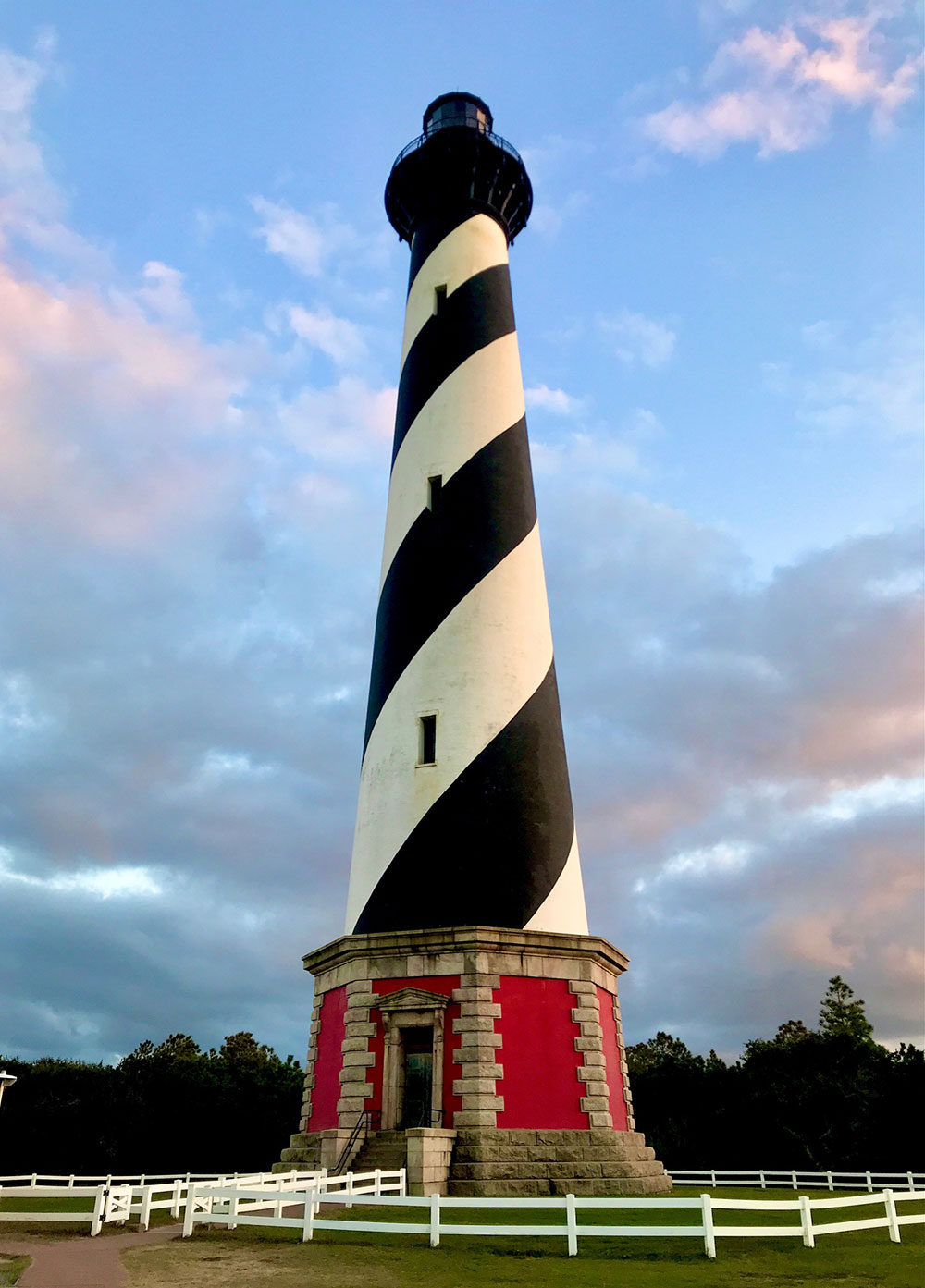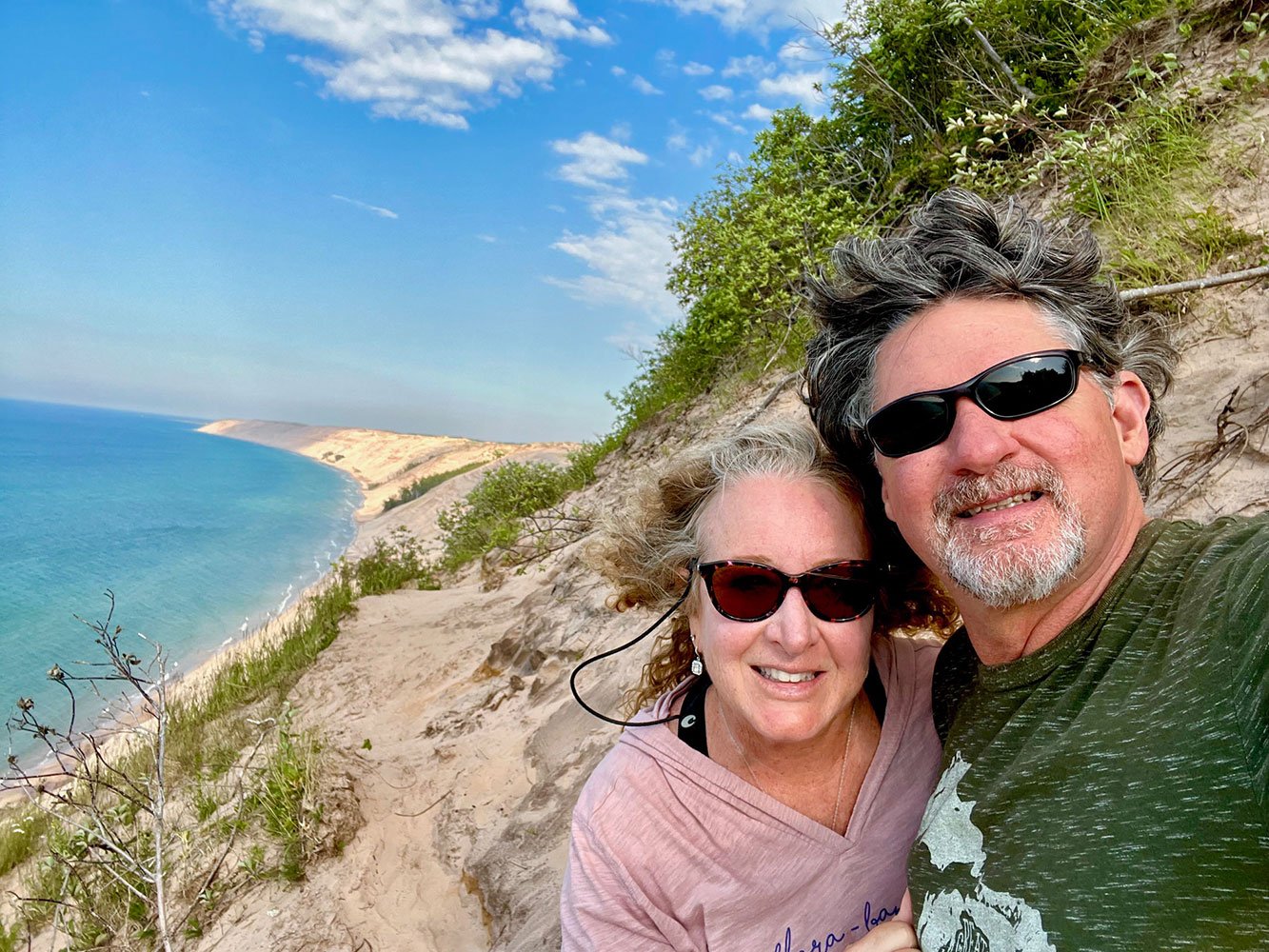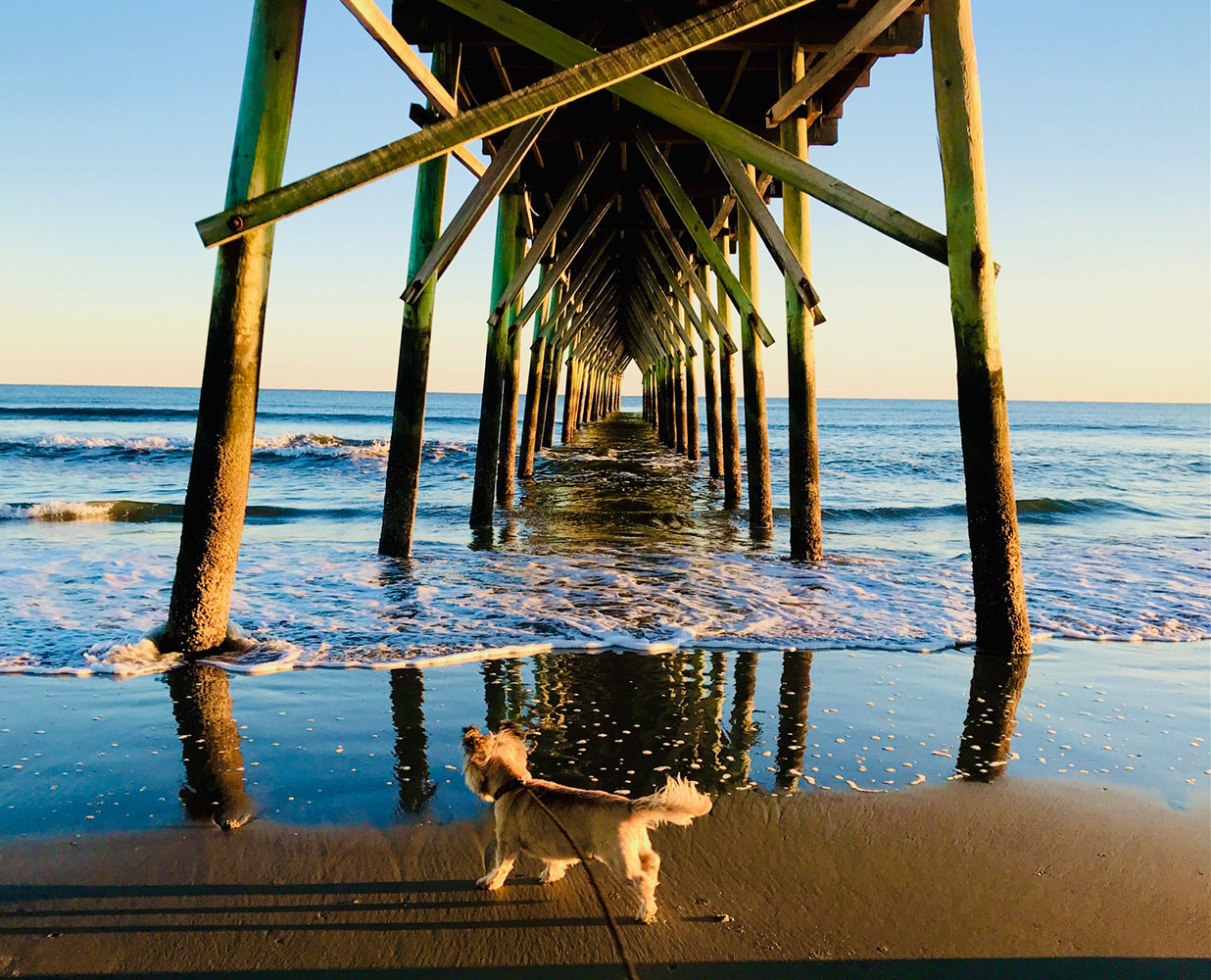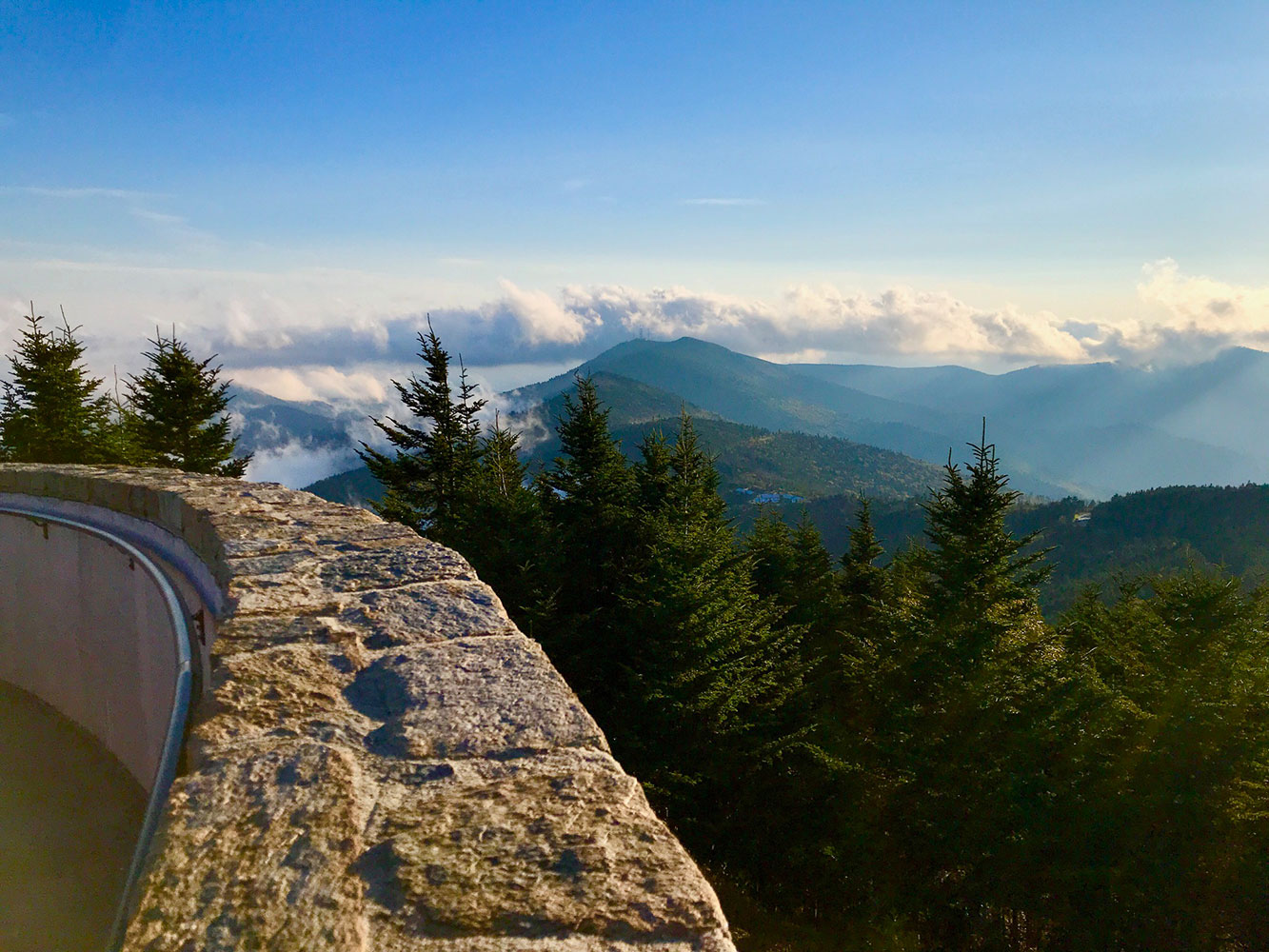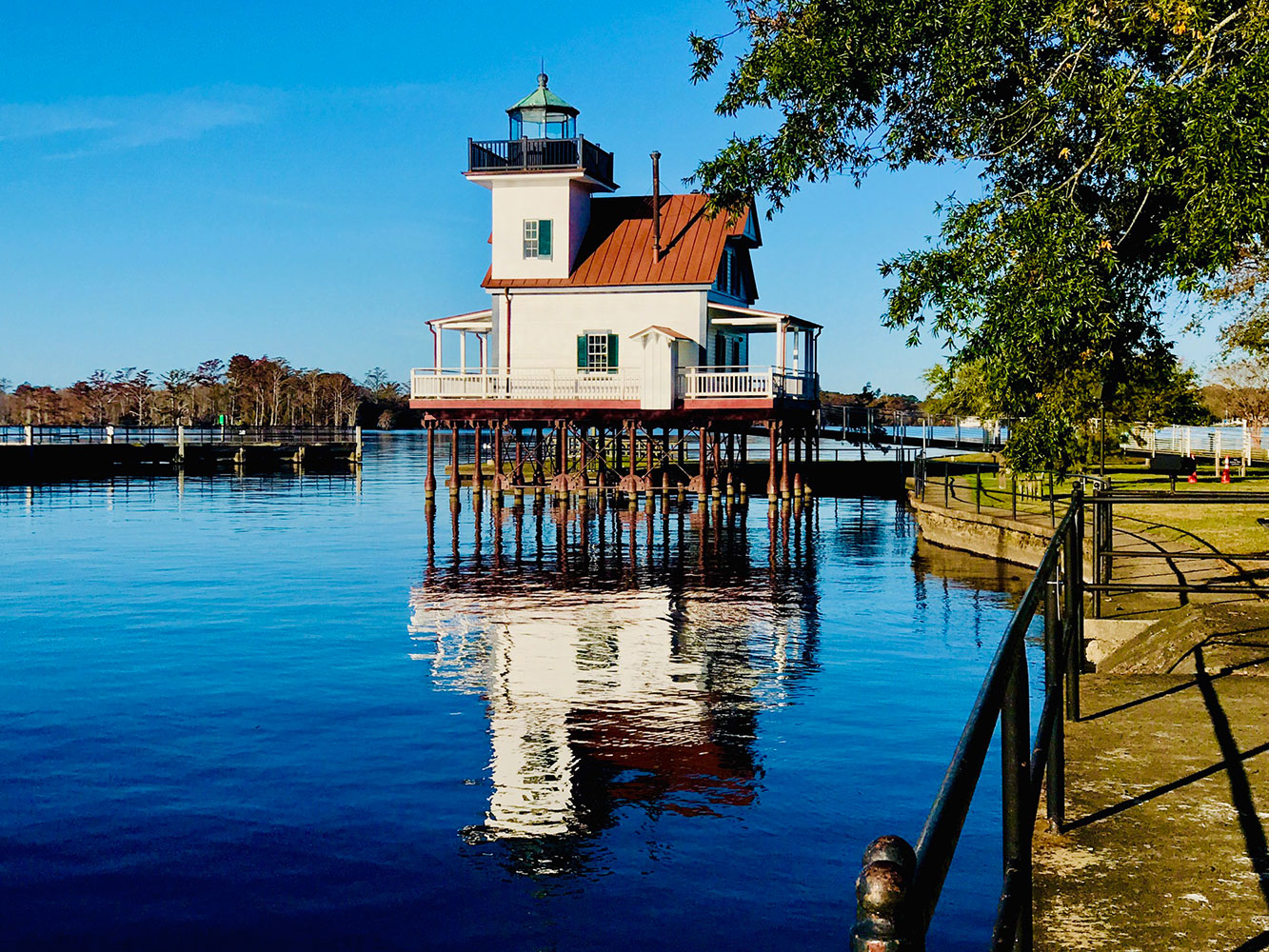Since 2019, my husband George and I have logged over 50,000 fun miles traversing the beautiful continental United States. We have traveled in SUVs, rental cars, a 1982 Volkswagen Westfalia, and a 2020 Dodge Ram ProMaster conversion van.
Getting out on the road is life-changing; each trip has rewards and challenges. You will realize how little you need to have a good time. Seeing other parts of the country will also open your mind to new experiences, people, and cultures. Road trips offer endless opportunities, whether you want to immerse yourself in nature exploring national parks or continue your education at museums and art galleries — or both.
Short trips, long journeys, staying close to home, or crossing the country, these travel tips will get you started on the right foot. Note: These suggestions are most applicable to two adults traveling together.
The scenic South Blue Ridge Parkway runs from Fancy Gap, Virginia, to Cherokee, North Carolina. Key points of interest include Linville Falls, Grandfather Mountain, Mount Pisgah, Appalachian Mural Trail, and the highest peak east of the Mississippi, Mount Mitchell. Stop by Boone, Blowing Rock, Bryson City, and Cherokee. You can do this 250-mile stretch in three to four days. Camping reservations are recommended from late May to October. 2.5 hours from the Triangle.
The North Blue Ridge Parkway runs from Fancy Gap to Skyline Drive at Shenandoah National Park in Virginia, passing quaint little towns like Floyd, Roanoke, and Rockfish Gap. Include a few days at Shenandoah National Park and visit the wine region trail near Charlottesville. 2.5 hours from the Triangle.
Tour the nine Eastern NC lighthouses, including Edenton, Plymouth, the Outer Banks, Oak Island, and — accessible only by sea or air — Old Baldy and Cape Lookout. The iconic Cape Hatteras lighthouse in the Outer Banks is the most photographed lighthouse on the East Coast. This road trip can take five days to two weeks, depending on how much time you want to explore. 2+ hours from the Triangle.
Spend a day or two in Gatlinburg, Tennessee, then drive through the Smoky Mountains for majestic views and a step back into history. The Cades Cove Loop, an 11-mile driving tour, includes pull-offs to hike and see old structures and abundant wildlife. Check weather conditions before heading out in case of closed roads. 5.5 hours from the Triangle.
Loop the Florida coast. Start on the Atlantic side, drive south to Key West, hit Everglades National Park, head north on the Gulf side of the state, and finish on the panhandle. Allow three weeks to a month. If you don’t have reservations to camp at a state park, stop in at 4:30 to see if they have cancellations. Avoid spring break and Christmas for the best lodging options. 8+ hours from the Triangle.
Start small: Before you set out on a cross-country expedition, start with a weekend trip. Like camping, experience is the best teacher. Shorter trips help you get comfortable being in a vehicle for long periods and learn what you do (and don’t!) need to pack.
Google everything: Successful road trips rely on researching the area you plan to visit. We took a month-long road trip through the northern part of Virginia’s Blue Ridge Parkway in April 2022. All the amenities on the Parkway were closed until the end of May, so we knew if we were going to camp, it would have to be off the Parkway.
We visited Bryce Canyon National Park in November, and the visitor center closed on the first day at 6 p.m. The next day, we went back at 5 p.m. after hiking all day, and they closed at 4:30 p.m. because their hours changed with Daylight Saving Time.
The key is knowing what to expect at your destination. Plan your must-do and would-like-to stops. Be flexible. Have an idea of where you want to go, but leave time for unexpected delays or places you may wish to stay longer than planned.
Save on sleep: Your three most significant expenses will be gas, food, and lodging. If you are adventurous and don’t need to sleep in a hotel every night, you can save money if you have a vehicle big enough to sleep in. It doesn’t have to be a camper van like our Westfalia or ProMaster. Even a small SUV with fold-down seats will work.
For less than $200, you can build a flat platform to put sleeping bags and pillows on with storage containers underneath. Last summer, we visited Michigan’s Upper Peninsula near Copper Harbor in our Toyota Highlander. We thought we would pitch a tent, but it was raining so hard that we decided to sleep in our car. The following day, the spot where we would have put our tent was underwater.
Some truck stops will let you sleep overnight. We also sleep in Cracker Barrel parking lots because they are safe and convenient. Most Walmarts will let you sleep in the parking lot, but not all. Check for signs that restrict overnight parking. Most Bureau of Land Management land offers free overnight parking.
Get road ready: Before you leave on your trip, ensure your vehicle is inspected, oil changed, fluids checked, the tires are in good shape, and you have a spare. Pack a “just in case” bag filled with a mini air compressor, jumper cables, tow strap, ax, folding saw, multi-tool, zip ties, duct tape, Vaseline, a first-aid kit, and strips of cardboard in case you get stuck in mud or snow. We also carry a shovel, rope, and two tarps — one to put on the ground and the other for a makeshift awning. Nothing will ruin a road trip quicker than bugs or mosquitoes in the vehicle, so bring bug spray, a screen for the windows, and/or a bug zapper light.
Be fuel efficient: Drive the speed limit and pack as little as possible to use less gas. Download gas apps to compare prices before fueling up. We like Pilot Flying J or Love’s Travel Stops because of the discounts. Every time you stop for gas, wash the windows and lights.
Pack with purpose: Check the weather where you will be. Set out the clothes you want to bring — then cut them in half. Plan to re-wear your outfits. Merino wool makes a great travel base layer because it’s breathable and controls odors. Always have something for cold weather when you go somewhere hot and vice versa. A rain poncho is a must. Wear loose, comfortable clothes when driving long hours and easy slip-on shoes in the car. Bring hardy walking or hiking shoes and flip-flops or sandals. I always leave home with two buffs. I bring a week’s worth of underwear whether I’m traveling for a few days or a couple of months. Pack your clothes in compression sacks in different colors to save space and quickly identify the type.

Key road trip items include a foldable table, Jackery 1000 power unit, water kettle, collapsible bowls, picnic bag with plates and utensils, tub with camping supplies, clothing bag, collapsible sink, and portable shower unit.
Snack smart: We like to make food ahead of time and freeze it. It will stay frozen for a few days if you have a quality cooler like an Igloo or Yeti. Freeze a few large water bottles to help keep your food cold. Keep a bag filled with healthy snacks. Sliced cucumbers make an excellent replacement for chips, for example. Drink plenty of water. We carry a minimum of 10 gallons of water at all times.
Get organized: It’s essential to have a place for everything and keep items organized for easy access. Take your time packing. Hang an organizer behind the front seats for frequently needed items, like hygiene products, suntan lotions, sun visors or hats, plastic bags for garbage, and Band-Aids. Keep storage bins or totes under your bed platform — one for camping items, another for heavier clothes like jackets, sweaters, and boots, and one for dry food. We use a rack on the back of the car if we are not traveling with our camper vans to free up space inside the vehicle.
We also keep a small tote in the front seat with flashlights, a headlamp, lighter, scissors, pen and paper, pliers and multi-tool, Swiss Army knife, hair ties, a roll of quarters for laundry or showers, cash, antacids, gum, moist towelettes, bottle opener, stamps for postcards, and a physical map of the area. A small picnic bag holds all our utensils, reusable plates, and knives.
And don’t forget … a portable charging unit with a car charger or solar panels. Collapsible bucket or sink, travel coffee mugs, umbrella, folding chairs, pillow, blanket, and a windshield shade. SiriusXM radio for music and news. Bring two rechargeable battery-operated fans to circulate the air in your vehicle. A small day pack for each person to carry supplies or to hold supplies or carry a change of clothes into a hotel.
Our motto is IAPOTA — It’s All Part of the Adventure. Learn to go with the flow and embrace all that comes your way, even unexpected mishaps.
- A Nostalgic Stay in Boone
- Small Business Spotlight: The Travel Mechanic
- Worth the Drive: The Hackney
- Celebrated Spirits: Matcha-Do About Nothing
- Celebrated Spirits: Hop on Top
- The Depot on First in Knightdale
- Out & About in Wake County: March / April 2024
- Road Tripping for Success
- Staunton: The Gem of the Shenandoah Valley
- Garden Adventurer: Dutch Treat: Keukenhof Gardens
- Erica Chats: Outdoor Adventures
- On Trend: Never Stop Exploring
- Pay it Forward: North Carolina Youth Outdoor Engagement Commission





